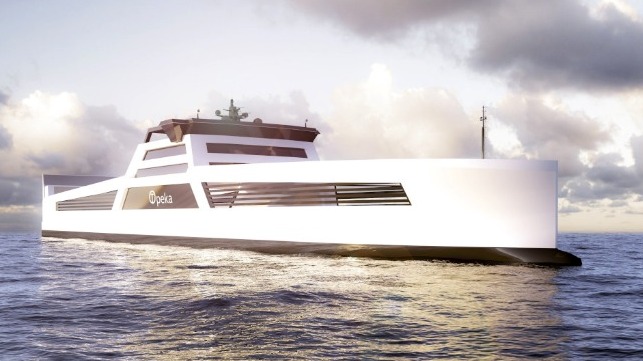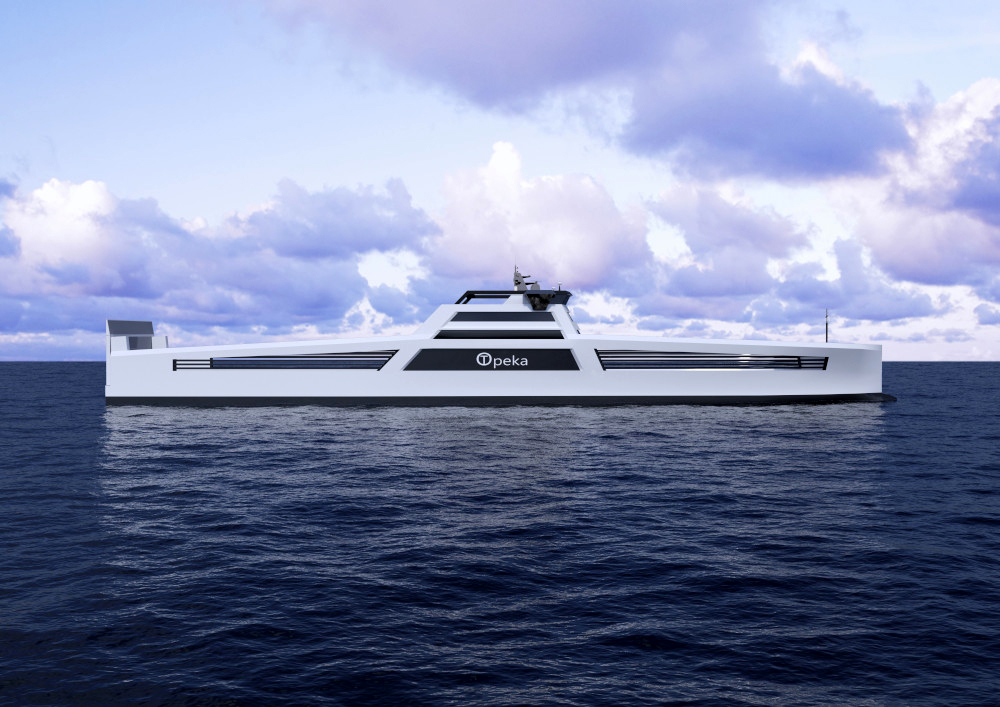Norwegian Project to Develop Hydrogen Prototype Ro-Ro and Supply Chain

Norway’s HySHIP project aims to lower the development and operational cost supporting a move to liquid green hydrogen (LH2) propulsion throughout Europe. The project will develop a series of unique prototype vessels starting with a ro-ro ferry along with seeking to establish a viable LH2 supply chain and bunkering platform.
The project, which is a collaboration between 14 leading European companies lead by Wilhelmsen, recently received an approximately $9.5 million grant as part of the Norwegian government’s focus on the development and commercialization of hydrogen as a carbon-neutral fuel. The funding will be coming from the EU’s Research and Innovation program Horizon 2020 under the Fuel Cells and Hydrogen Joint Undertaking (FCH2 JU). It is subject to the signing of a grant agreement by the HySHIP partners by the end of this year.
Their first initiative is focusing on collaborating on the design and construction of a new ro-ro demonstration vessel running on liquid green hydrogen (LH2). Going under the concept name Topeka, the vessel will be the first of its kind to enter commercial service and part of a large-scale validation of both the ship, its innovative power system, and the distribution network.
“Hydrogen as a fuel enables opportunities for low, or zero-emission shipping,” says VP of special projects Per Brinchmann at Wilhelmsen. “The Topeka will be our first step towards scalable LH2 fueled maritime operations. We shall create a full LH2 infrastructure and commercial ecosystem, while at the same time removing yearly some 25,000 trucks from the roads.”

Broadside of the Topeka - courtesy of Wilhelmsen
The Topeka will be built for zero emissions through a combination of 1,000 kWh battery capacity and a three-megawatt PEM (proton exchange membrane) hydrogen fuel cell. Hydrogen will be sourced from the new LH2 production plant planned at Mongstad outside Bergen by BKK, Equinor, and Air Liquide.
The goal is to have the ship operational starting in 2024, sailing on a fixed schedule along the Norwegian coast. In doing so, it will not only validate the concept, but also help to establish the LH2 supply chain and bunkering platform. The Topeka will transport coastwise cargos as well as distributing containerized LH2 to the bunkering hubs along the Norwegian coast.
According to HySHIP, Norway’s west coast is dotted with bases serving the offshore industries. The base-to-base transport represents a heavy-duty transport route that they believe is well suited to LH2. In the future, they believe the bunkering hubs will supply LH2-powered vessels, including ferries and seagoing ships.
“A hydrogen driven coast-liner that has a regular frequency is a very promising transportation alternative for Equinor’s bases on the west coast of Norway,” said Frida Eklöf Monstad, Vice President Logistics and emergency response at Equinor. “This zero-emission vessel service will also be a valuable demonstrator of the technology development supporting Equinor’s ambitions to move cargo from road to sea and to halve emissions from our maritime activities in Norway by 2030.”
HySHIP will also conduct three additional studies, including a smaller, 1MW tanker barge for use on inland waterways, a 3MW fast ferry, and a scaling-up study on a larger, 20MW energy system for ocean-going vessels modeled on a Capesize bulk carrier.
The consortium partners in addition to Wilhelmsen, include Kongsberg Maritime, LMG Marin, Equinor, Norled, PersEE, Diana Shipping, Stolt-Nielsen Inland Tanker Service, Air Liquide, NCE Maritime CleanTech, DNV GL, ETH Zürich, Strathclyde University and Demokritos.
